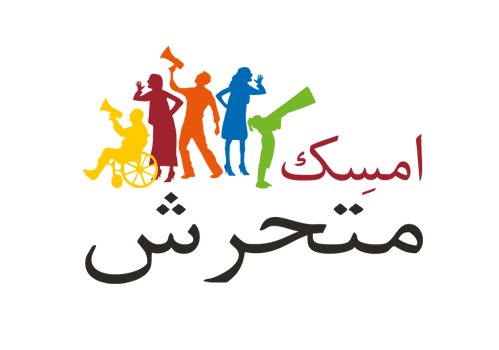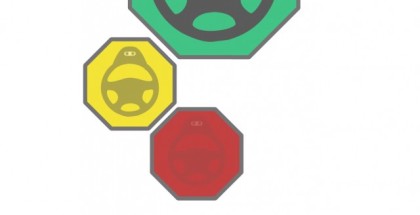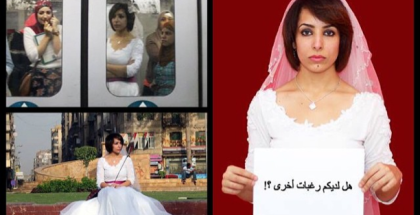Launching ‘Safe Areas’ Initiative Against Harassment
April 10, 2013 | Nadine El SayedHarassMap, an independent initiative to combat sexual harassment in Egypt, are re-launching an initiative that works on the community level to ensure areas where women can be assured help and support against harassers.
Rebecca Chiao, co-founder of HarassMap, explains that they do not believe that laws or the victim’s behavior or attire can prevent sexual harassment, the answer, they believe, lies in how society reacts to it.
“In our opinion, the only way the harasser will change their behavior is society’s response […] society needs to stand up to it,” she says. “Other organizations work on laws, we don’t believe that laws will have an effect, we have laws and they haven’t had an effect.”
Although there are legislations against harassment, the problem lies in their implementation. In order to report a harasser, the victim needs to have caught him to present him to the police. However, Chiao adds, policemen are often reluctant to catch the harasser or even file the report against him, and often try to sway the victim against filing a case.
“Most policemen are just normal people and on the streets normal people will harass you or blame the victims,” says Chiao. “Many people tell us that when they go to make a report the police will tell them ‘if we make a report his family will suffer and they’re innocent, why do you want to punish his family? or ‘Why don’t we just beat him or we hold him and you beat him.’”
Harassment was once reacted to as strongly as other crimes and harassers were shamed and their heads shaved as a punishment. The attitude, however, has changed drastically, ranging from nonchalance to blaming the victims.
Even stand-byers, Chiao recounts, have often been reported to tell the harassment victim that she is to be blamed for not dressing conservatively enough or to head home and not make a scene trying to catch the harasser or tell him off.
Harassing: Just a fun pastime
Studies from the Egyptian Center for Women’s Rights as well as reports submitted to HarassMap indicate that harassment has almost nothing to do with sexual drive. Chiao says that over eight percent of harassers are kids. The problem is, Chiao says, that people often do not see harassment as a wrong and shameful act, they see it as a game or a good laugh.
“I heard this story from a man, he was going to the mosque on Friday and he saw two guys harassing girls and then go pray and he was like, ‘how can you guys do that and then go pray?’ But they didn’t even register, they kind of forgot that they did it,” recounts Chiao.
The same goes with children who often see their fathers, older brothers or friends harassing girls and want to imitate them to feel powerful and cool. “One day in our community outreach our volunteers asked a kid what he was doing for eid [feast] and the kid said ‘oh, eid, that’s when my dad goes down to harass girls.’”
Seeing the major problem lies in the lack of belief that harassment is a serious and shameful crime, and that working on the law doesn’t seem to yield positive results, HarassMap believes the only way to combat sexual harassment is to make society react to it as strongly as they react to theft, for instance.
“We are a poor country and have a huge gap between the rich and the poor, in most countries this creates problems with theft and pickpocketing, in Egypt it is so low and safe,” says Chiao. “We don’t have a serious problem with this or murder. One of the reasons, I think, is because it is just unacceptable. If you’re walking in the street and someone even tries to take your bag if you yell thief everyone comes down and tries to help you.”
Safe Areas
HarassMap had been working on a “Safe Areas” initiative that they had launched before but are re-launching now with more funds to operate on bigger scales as they have received enough funding to have a full-time staff on board.
The initiative entails that every volunteer addresses the people in his neighborhood, as a peer, to educate them on the serious effects of harassment and to educate them on how the victim cannot be blamed for it.
“If the victim tells [harassers that harassment is unacceptable,] they don’t care, they don’t respect the victim anyway so they aren’t going to listen to anything she says,” explains Chiao. “If the advice comes from outside, a bystander, a witness, a parent, an authority figure they have a relationship with they would listen.”
Working on one neighborhood at a time, the initiative will mark participating shops, offices and public areas as “Safe Areas.” Being marked as a safe area means that the owners of these shops or the companies adopt strong policies against harassment and vow not to blame the victim, to stand up to the harasser and report him and to provide all necessary help to the victim to prevent harassment.
“It is an area where the victim feels supported and not blamed,” she says.
Chiao explains that when they first started the initiative, they got the same responses from people. At first, people they speak to are in denial, claiming such incidences do not happen in their neighborhoods, but when the volunteers show them a map of the frequency of reported harassment in each neighborhood, they start arguing that the victim must have brought it onto herself. Through statistics and data the volunteers are given, they have reported that eight out of every 10 people they spoke to normally end up changing their attitudes and become willing to take action against harassment and make their shops a safe area.
Once people agree to make their shops or offices a safe area, they will get thorough training on how to prevent and combat harassment. HarassMap will also give large corporations a training module to train their employees or students in turn on how to report and address harassment. Companies and universities would also be given training on how to create policies to combat harassment and what constitutes workplace harassment.
Although they are still working on micro businesses, their short-term plans include nationwide collaborations with corporates and universities to become role models and show a visible public movement against harassment.
“We are also working on safe vehicles and will start a schools’ program working with other NGOs to help students, teachers or NGOs start this in their own institutes,” concludes Chiao.



























Submit a Comment